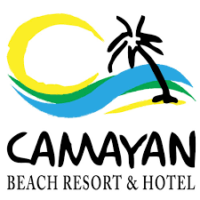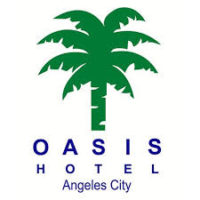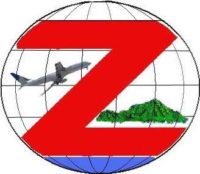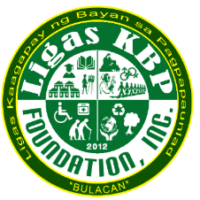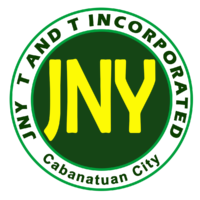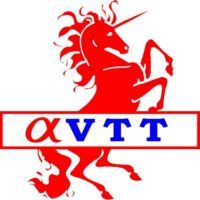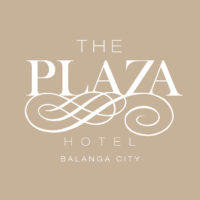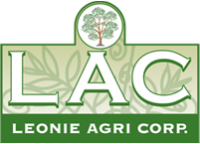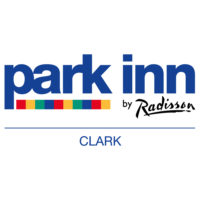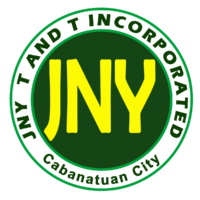Central Luzon is one of the leading growth regions in the Philippines. It is strategically located at the heart of Asia, and no other place with sea and air travel and cargo facilities can equal Central Luzon in terms of almost equal travel time in Asia. Its location has been central enough for the area to be the choice of FedEx’s Asia One Hub and the United Parcel Services (UPS).
Only 66 kilometers away from Metro Manila, Central Luzon is the gateway to the Northern Luzon regions. It covers a total land area of 21,470 square kilometers, and is divided into seven (7) provinces, namely: Aurora, Bataan, Bulacan, Nueva Ecija, Pampanga, Tarlac and Zambales.
The region contains the largest plain of the Philippines and produces most of the country’s rice supply.
There are twelve cities which include: Balanga from Bataan; Cabanatuan, Gapan, Muñoz, Palayan and San Jose from Nueva Ecija; Olongapo from Zambales; Angeles and San Fernando from Pampanga; San Jose del Monte and Malolos from Bulacan; and Tarlac from Tarlac.
The City of San Fernando, in Pampanga, is the regional center. Aurora was transferred from Region IV by Executive Order No. 103.
Cities: Angeles City (Pampanga), Balanga City (Bataan), Cabanatuan City (Nueva Ecija),
Gapan City (Nueva Ecija), Malolos City (Bulacan), Science City of Muñoz (Nueva Ecija),
Olongapo City (Zambales), Palayan City (Nueva Ecija), City of San Fernando(Pampanga), San Jose City (Nueva Ecija), San Jose del Monte City (Bulacan), Tarlac City (Tarlac).
Central Luzon region, also known as Region 3, comprises the largest plain of the Philippines, it is called most of the country’s rice supply. It was the third largest region in terms of population size amidst the 16 regions, in the Philippines, containing 10.50 percent of the 76.5 million human beings of the country as recorded in Census 2000.
It is one of the most active and energetic regions in the Philippines. It is situated at the crossroads of Asia pacific. It serves as the gateway for European and American business organizations desiring to penetrate Asia.
It is composed of seven provinces, twelve cities and 118 municipalities. Its 7 provinces are Aurora, Bataan, Bulacan, Nueva Ecija, Pampanga, Tarlac and Zambales. Its 12 cities are Balanga from Bataan, Malolos and San Jose del Monte from Bulacan, Cabanatuan, Gapan, Muñoz, Palayan and San Jose from Nueva Ecija; Angeles and San Fernando from Pampanga, Tarlac from Tarlac; and Olongapo from Zambales.
Malolos, Bulacan was the place where the first constitution of an independent Philippines was promulgated on January 21, 1899. The travel time to Malolos by land from Metro Manila is 42 minutes.
Angeles City is likewise highly urbanized city. Its figures are also excluded from Zambales. The travel time to Clark Special Economic Zone is one hour and 44 minutes by land from Metro Manila.
The City of san Fernando, in Pampanga, is the regional center of Central Luzon. Its travel time by land from Metro Manila is one hour and six minutes.
Tarlac town became the seat of a Philippine government for one month in March 1899, following the time when President Aguinaldo had run away from Bulacan due to the approaching forces of the new colonial master, the US.
Olongapo City is likewise highly urbanized city. Its figures are also excluded from Zambales. The travel time to its adjacent Subic Bay Freeport Zone by land from Metro Manila is two hours and five minutes.
It’s new province, Aurora, namely, Baler, Casiguran, Dilasag, Dinalungan, Dipaculao, Maria Aurora and San Luis.
It has 11 municipalities from Bataan, namely, Abucay, Bagac, Dinalupihan, Hermosa, Limay, Mariveles, Morong, Orani, Orion, Pilar and Samal
It has 22 municipalities from Bulacan, namely, Angat, Balagtas, Baliuag, Bocaue, Bulacan, Bustos, Calumpit, Doña Remedios Trinidad, Guiguinto, Hagonoy, Marilao, Meycauayan, Norzagaray, Obando, Pandi, Paombong, Plaridel, Pulilan, San Ildefonso, San Miguel, San Rafael and Santa Maria.
It has 27 municipalities from Nueva Ecija, namely, Aliaga, Bongabon, Cabiao, Carranglan, Cuyapo, Gabaldon, Gen. M. Natividad, Gen. Trinio, Guimba, Jaen, Laur, Llanera, Lupao, Nampicua, Pantabangan, Peañranda, Quezon, Rizal, San Antonio, San Isidro, San Leonardo, Santa Rosa, Santo Domingo, Talavera, Talugtog and Zaragoza.
It has 20 municipalities from Pampanga, namely, Apalit, Arayat, Macabebe, Magalang, Masantol, Mexico, Minalin, Porac, San Luis, San Simon, Santa Ana, Santa Rita, Santo Tomas and Sadmuan.
It has 17 municipalities from Tarlac, namely, Anao, Bamban, Camiling, Capas, Concepcion, Gerona, La Paz, Mayantoc, Paniqui, Pura, Ramos, San Clemente, San Jose, San Manuel, Santa Ignacia, and Victoria.
Tarlac province produces a lot of sugar on Hacienda Luisita, one of the biggest haciendas in the archipelago. The travel time to Luisita Industrial park by land from Metro Manila is 2 hours and 5 minutes.
It has 13 municipalities from Zambales, namely, Iba, Botolan, Cabangan, Candelaria, Castillejos, Masinloc, Palauig, San Antonio, San Felipe, San Marcelino, San Narciso, Santa Cruz and Subic.
Two international airports belong to Central Luzon region. They are Clark International Airport and Subic International Airport. CIA was given a new name. CIA is now called Disodado Macapagal International Airport.
Central Luzon had a median age of 22 years in 2000, and 21 years in 1995. Bataan, Nueva Ecija, Pampanga and Tarlac had a median age of 22 years, while Bulacan, Zambales, Angeles City and Olongapo City had 23 years.
The recorded sex ratio was 102 males for every 100 females in Census 2000 as well as in Census 1995.
The young dependents (0 to 14 years) was 35.3 percent of the total population of Central Luzon. The old dependents (65 years and over) was 3.9 percent, while the economically active population (15 to 64 years0 was 60.8 percent. If the sum of 35.3 and 3.9 is divided by 60.8, the answer is approximately 64 percent. The overall dependency ratio in 2000 was 64. There were around 64 dependents, 58 young dependents and 6 old dependents, for every 100 persons aged 15 to 64 years.
Roman Catholics comprises 86.09 percent of the population of Central Luzon. Iglesia ni Cristo comprises 4.39 percent, while Aglipayan comprises 1.94 percent. Other religious organizations comprises 7.25 percent population 10 years and over who are able to read and write a simple message. The literacy rate in Central Luzon was 94.80 percent.
Olongapo City had the highest literacy rate with 98.74 percent. Bataan followed with 95.93 percent, while Bulacan had 95.87 percent.
The average number of children born to ever-married women in Central Luzon was 3, while Angeles City and Olongapo City had 2. In Zambales, 2.62 percent of ever-married women had 8 or more children ever born, while Tarlac got 2.44 percent.
In 2000, more than half (54.61 percent) of 135, 802 overseas workers were males. Female overseas workers had a median age of 29 years, while male had 36 years.
For source of lighting, 87.38 percent of the households used elecyricity, 8.81 percent used kerosene or gaas, and 1.01 percent used liquefied petroleum gas (LPG). In Angeles City, 93.83 percent used electricity. In Bulacan, 93.82 percent also used electricity, while in Zamabales, 78.93 percent, the lowest in Central Luzon.
For source of water supply for drinking and/or cooking, 30.75 percent used own use, faucet community water system; 20.16 percent used shared tubed/piped deep well; and 19.98 percent used own use, tubed/piped deep well.
For cooking, 67.94 percent of households used liquefied petroleum gas (LPG) as fuel, 14.05 percent used wood, and only 2.95 percent used electricity.
For toilet facility, 48.68 percent of the households used exclusively water sealed, sewer/septic tank; 22 percent used water sealed, other depository; 5.68 percent used closed pit; and 3.45 percent did not use any toilet facility.
To have a good environment and good health, proper disposal of garbage is a must. Around 51 percent of the households in Central Luzon used burning, 36.35 percent used garbage truck picking up, and 7.15 percent used dumping in individual pit. The usual manner of garbage disposal was through picked up by garbage truck in Olongapo City with 86.45 percent, Angeles City with 83.03 percent, and Bataan with 57.75 percent. In all other provinces in Central Luzon, the usual manner of garbage disposal was through burning.
For housing units, 75.77 percent of the households owned/amortized their houses, 10.87 percent occupied their housing units for free with consent of owner, and 8.40 percent rented their housing units.
Mount Pinatubo, a dormant volcano for over 600 years, began erupting on June 9, 1991 and changed the landscape of the Central Luzon plains, particularly of the adjacent provinces of Pampanga, Tarlac and Zambales. Agricultural lands were covered with ash and mud to deep to be plowed under. The coral in surrounding waters was silted and dying and the population of fish decreased rapidly. Smaller trees, shrubs, herbs and forage for animals started dying under the load of volcanic sand and ash.
Expert volcanologists estimated that Mount Pinatubo gave out two cubic kilometers of volcanic debris including rock, sand, ash and other materials in the major eruptions after June 9, 1991.

















































